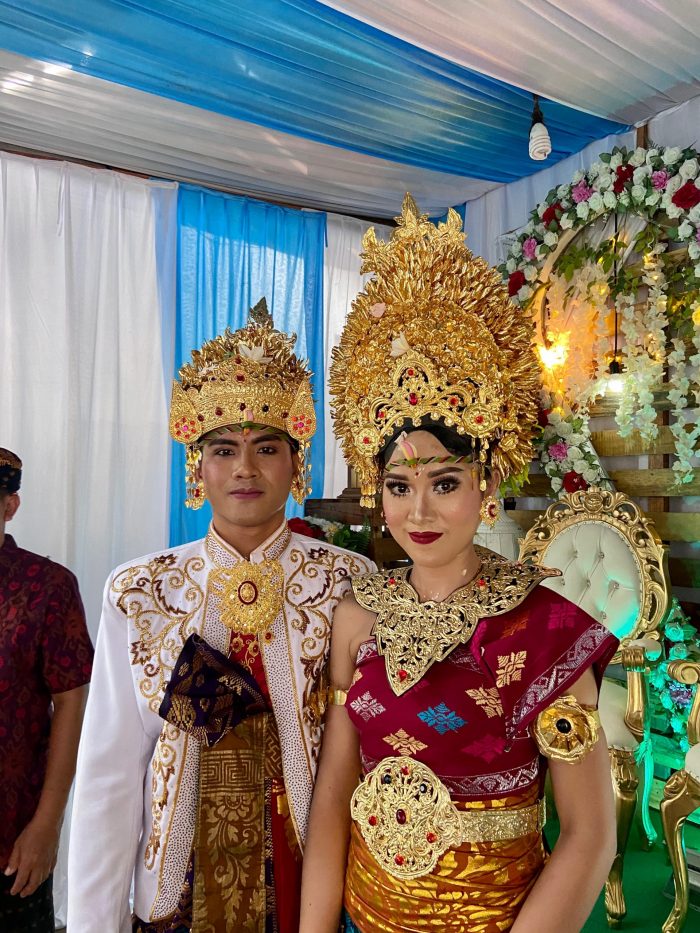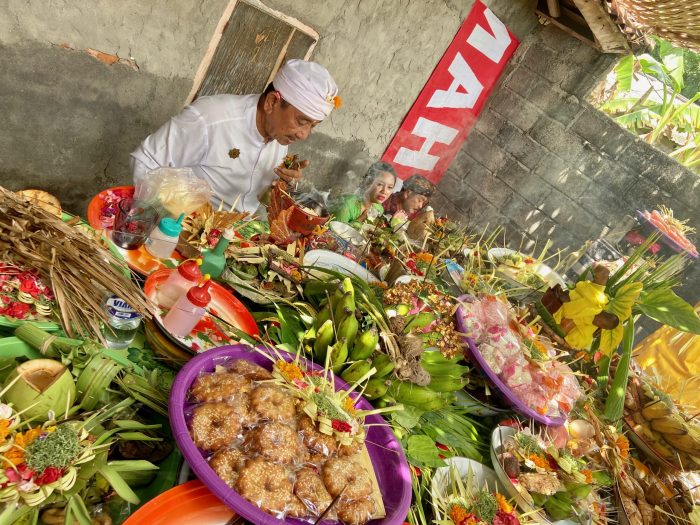All around the world, weddings are celebrated grandly and merrily. Marriage is an unforgettable day; it is the moment that you and your fiancé make a promise to love and cherish each other for the rest of your lives.
But for Balinese people, this commitment goes one step further.
In Bali, a wedding is celebrated exuberantly, taking up to three full days. During a traditional, Balinese-Hindu wedding, three ceremonies are performed. This means that Balinese weddings are held with various sacred ceremonies and processions. In their eyes, a wedding is beyond vital. When two Balinese people marry, they don’t only marry each other, they also make a relationship with the whole extended family. This is especially important for the bride; she will move into her husband’s family after they marry, according to a saying in Balinese which means: “once you marry your partner, you’ve married his family as well.”
I was invited to the wedding of I Made Langgeng Jayana and Ni Made Putri Cahyani, both 25-years-old. It’s common for Balinese people to marry in their early twenties. They believe that the sooner they marry, the better it is. The wedding I visited took place in Jasri Amlapura, a small village in the east of Bali. The first ceremony took place in the house of the Cahyani family, the family of the bride. Cahyani looks absolutely stunning in her colourful traditional Balinese attire, golden headgear, and glamourous make up. “We grew up in the same village and went to the same junior high school, so we’ve already known each other since we were kids. Eventually, we fell in love and got into a relationship,” she tells me with enthusiasm.
This wedding attire is filled with colours and gold, which are symbols for happiness and celebration. The golden headgear on Putri is part of the Payas Agung, which means “the greatest”. Payas Agung is luxury clothing which was originally worn by nobility and the royal family, but nowadays, it’s worn at weddings by people who can afford it. In the middle of her costume, at the height of her waist, there is a small triangle. This triangle is the symbol for the sexual part of the bride, her vulva. The groom wears a sword on his back, which is a symbol for his penis. The groom can cut the triangle with his sword after the wedding, which is a symbol for sexual interaction. Of course he won’t use the sword for real; it is just a symbol for having sex with his physical sword. The sword is also a symbol of protection and loyalty towards the woman.
The ceremony on the first day started with the groom’s family visiting the bride’s family, to seek their permission for marriage. This ceremony is called ngidih, meaning “to ask” in English. It is not only a proposal from the groom, but from his whole family. Obviously, the families have met before and have already been discussed that the family of the bride will give permission, but it is an important ritual of the wedding. On this day, the bride and groom put on their engagement rings, and the bride is welcomed in the house of the groom, and by the temple of his family.
The second day was the biggest day when the Mentanjung Sambuk ceremony took place. The families asked permission of marriage to the spirits and Gods. This implies several traditions. At the wedding of Putri and Langgeng, both families walked to the house of the bride and carried sacrificial trays on their heads, to give to the family of the bride. This is called meserah. The trays are filled with flowers, banana leaves, cakes, fruits, vegetables, chicken, and chips. On arrival, all the trays are placed at the family temple and the ceremony is led by the Hindu priest, called the Pemangku. The priest sprinkles the almost-married couple with holy water while praying to the spirits. This ritual is necessary for the purification of the body and soul and to welcome good spirits.
The bride has officially left her house, family, and family temple, and she has moved into the groom’s family house after the wedding. However, she will still go to her family temple to pray as a farewell. This is the third ceremony. The bride has no further responsibilities towards her family anymore, and she doesn’t have to take part in any traditional or religious rituals with her family. This is why this is usually the most emotional moment for the bride, as her life will drastically change after marriage. Putri feels lucky though, her family lives close to the family of her partner. “By this way, I can always come by and see my family as much as I like,” she says.
The third day of this extravagant wedding is all about celebrations – no more ceremonies need to be conducted. Music was played and everybody living in the village was invited to come to dance, drink, and eat loads of food to commemorate this special chapter of Putri and Langgeng.
See: The Dark Night – Bali




